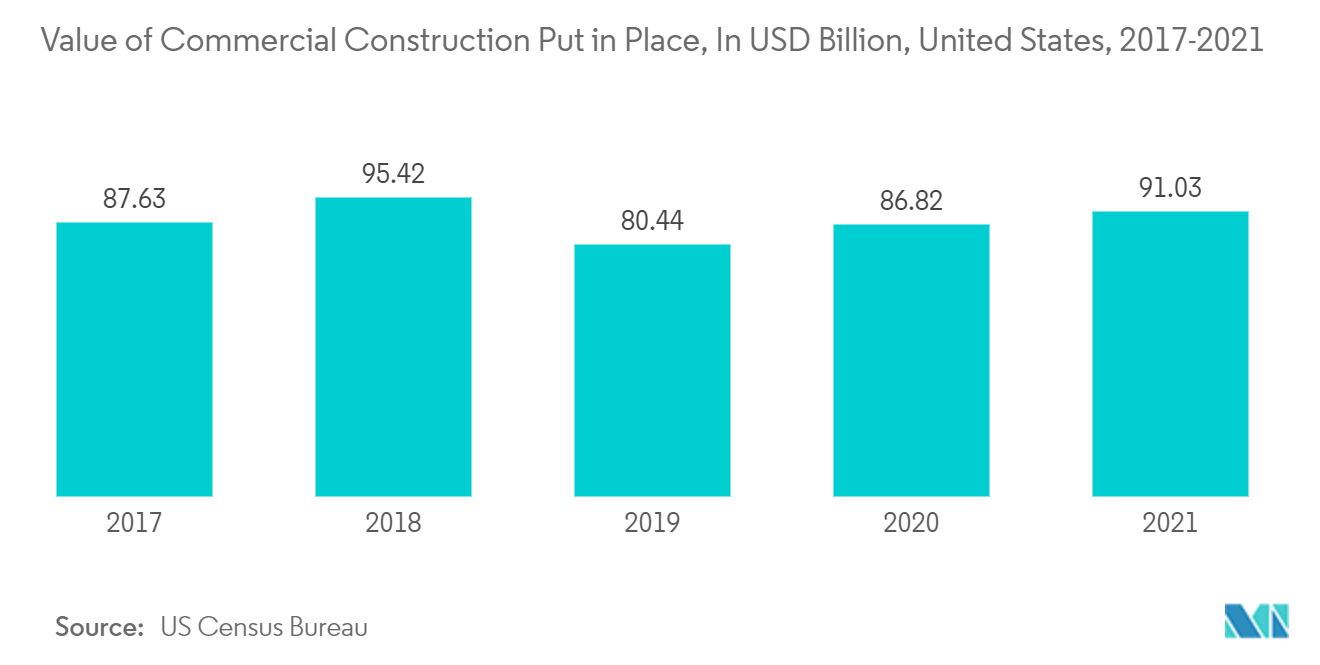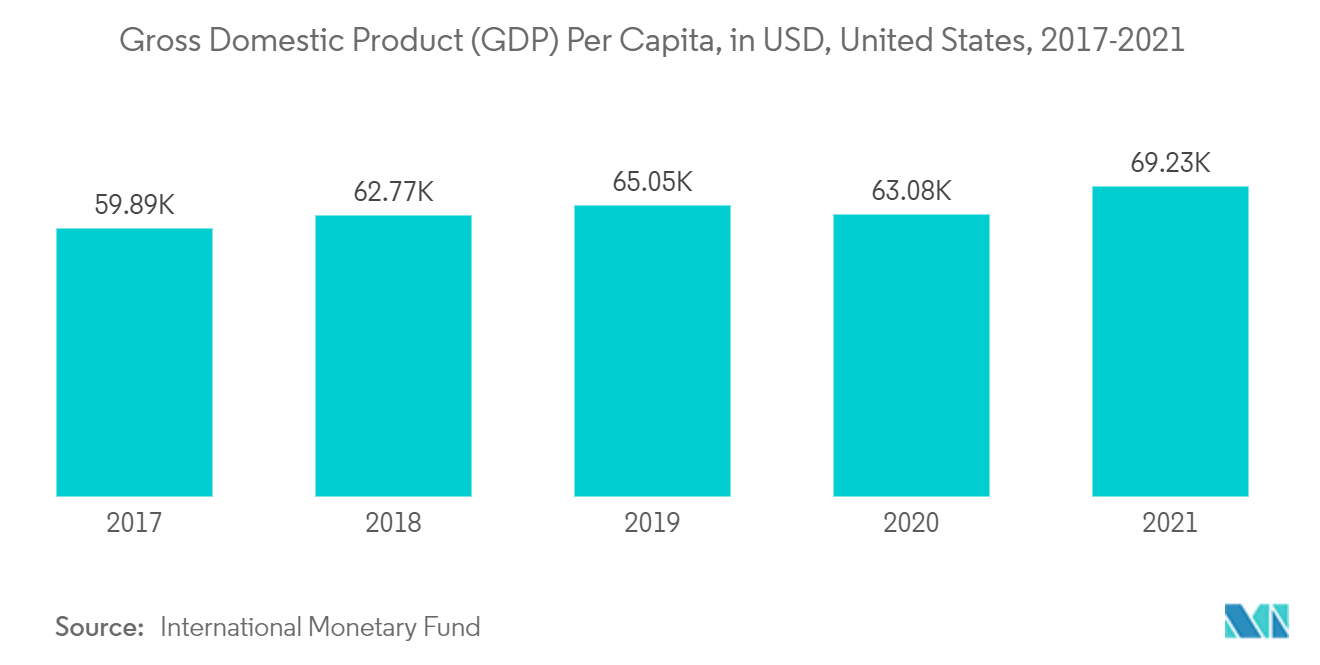Market Trends of United States Air Conditioning Equipment Industry
This section covers the major market trends shaping the US Air Conditioning Equipment Market according to our research experts:
Commercial Segment is one of the Factor Driving the Market
- According to the United States Energy Information Administration, Nearly 20% of the country's energy consumption and 12% of its greenhouse gas emissions are attributed to commercial buildings. Smart buildings serve the entire world community by lowering waste and preserving energy.
- Reducing energy use in buildings can save building owners to save more on their operational costs. By connecting mechanical and electrical systems in buildings to the cloud, they can automatically switch on and off, reducing waste.
- The investments in commercial buildings are massive in the United States. According to Construct Connect and Oxford Economics, in 2022, the value of commercial construction by retail will account for USD 19.64 billion, USD 14.96 billion for hotels, USD 12.05 billion for government, and USD 9.66 billion for sports stadiums. The robust investments directed toward commercial projects create a need AC equipment.
- The companies are expanidng thier presence by constructing new offices in the region which will enable the market to grow. For instance, May 2022, As part of its expansion strategy, Clark Construction Group has announced the inauguration of a new 128,000ft2 office in McLean, Virginia, US. The organization's infrastructure, construction, and asset solutions departments will have a modern, collaborative hub in this new office space. Additionally, Clark is maintaining almost 29,000ft2 of its office space in Bethesda and increasing its office space at Stadium Square in downtown Baltimore by a factor of two.
- In February 2021, Daikin Applied collaborated with ElitAire, to utilize its existing parts distributor and sales representative globally. ElitAire, which is now part of the Daikin Group, is likely to be Daikin Applied's authorized service and technology provider, supporting customers throughout the lifecycle of their commercial heating and cooling equipment. Such partnerships are poised to increase the usage of custom air handlers of Daikin in the commercial sector of that respective region.

Variable Refrigerant Volume is one of the Factor Driving the Market
- Most commercial structures, from little stores and cafes to big office complexes and public areas, use VRF systems. VRF zoning ensures that energy is only used to cool or heat occupied offices. Due to their quiet indoor units and ability to maintain precise temperature control, VRF systems guarantee the most comfortable and productive work environment.
- VRF systems offer simultaneous heating and cooling services, accurate temperature control, and high energy efficiency. These benefits give these systems a competitive edge over conventional methods and are the main drivers of industry expansion. The expanding construction industry, loosening regulations in the real estate and construction sectors, significant potential for energy savings, and low and simple maintenance needs of VRF systems are all major factors propelling the market for VRF systems.
- To meet the demands of the customers the firms in the region are providing different products to enhance their market share. For example, In addition to providing a large capacity range of up to 270 kW in a single central system, Bosch VRF Air Conditioning Systems also employs a modular design approach with space-saving outside units, fashionable indoor units, and sophisticated controls. This high-efficiency product line is appropriate for air-conditioning facilities, including hotels, businesses, hospitals, restaurants, villas, and schools. The advantages of a VRF system include connecting to building management systems and providing individual room control and centralized control.
- The COVID-19 epidemic significantly negatively impacted the VRF systems business, just like in any other industry. On the one hand, procuring the raw materials and components needed to produce VRF Systems, delivering finished goods, and luring workers out of quarantines were all issues that VRF system makers had to deal with. However, the market growth has been positively impacted by increasing automation in various manufacturing organizations and integrating the Building Automation System (BAS) for schedules and alarms.
- VRF is frequently used in combination with energy recovery ventilation. A variety of increased ventilation and VRF provides the best indoor environmental comfort (IEC) and indoor air quality (IAQ). Standard energy recovery ventilators or specialized outdoor air systems are used to achieve this (DOAS). Multiple filtration points are possible with numerous indoor VRF units placed in various locations. The air can circulate and filter more often thanks to these tiny conditioning points.


